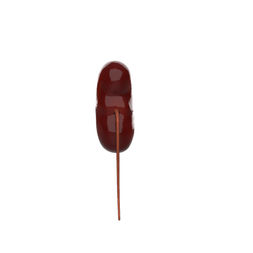Polcystic Kidney Disease Model & Video
2024
University of Dundee, Medical Art - Semester 2
Medium: Zbrush, Keyshot, Adobe AfterEffects
Development
Process
I created this 3D model of a polycystic kidney using ZBrush, beginning with a basic sphere that I sculpted into the form of an enlarged kidney. Once the base shape was established, I used a combination of the Inflate, Move, and Smooth tools to model cysts in varying sizes and shapes, based on reference images and research into polycystic kidney disease (PKD).

Process
To mimic the fluid-filled appearance of cysts, I applied polypainting techniques to select areas, enhancing realism through subtle color variation. To suggest the presence of internal ducts and blood vessels, I incorporated custom brushes that resembled vascular branching, which also helped to add surface texture.
After completing the kidney, I modeled the ureter using multiple ZSpheres. Further research into ureter anatomy informed its proportions, allowing me to construct a version consistent with a healthy kidney for contrast. To emphasize the dramatic size difference between a diseased and healthy kidney, I reused the original base kidney model and rescaled and recolored it to match typical healthy anatomy.

Final Models
Once both models were completed, I exported them as OBJ files and imported them into KeyShot. There, I applied realistic plastic-like materials to enhance the anatomical look of the kidneys. Finally, I brought the rendered keyframes into Adobe After Effects, where I completed the final animated video for presentation.












